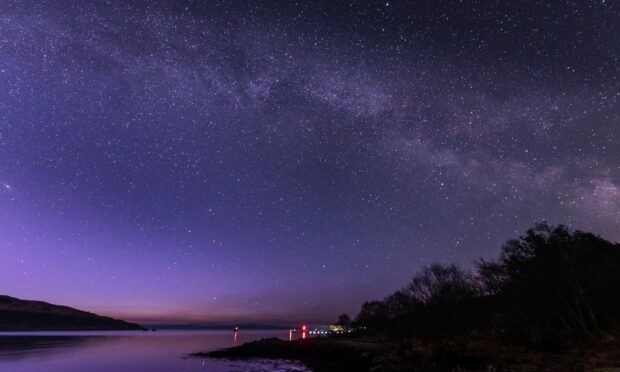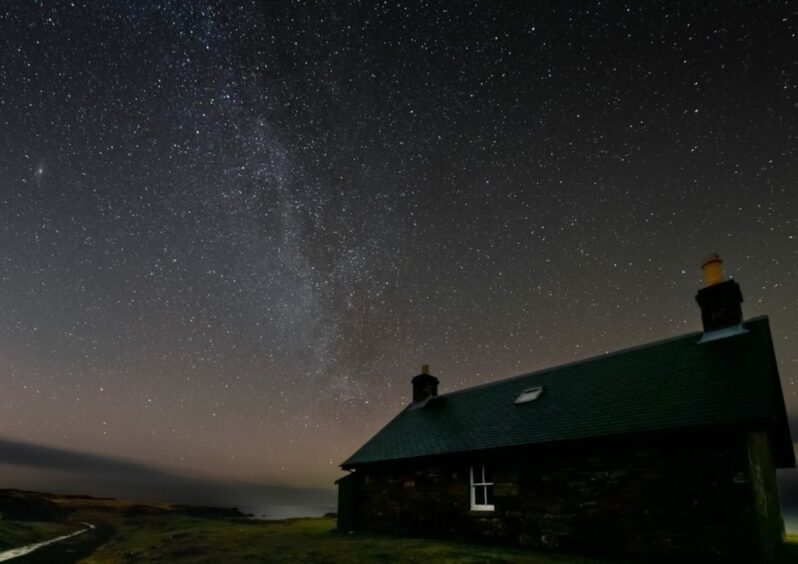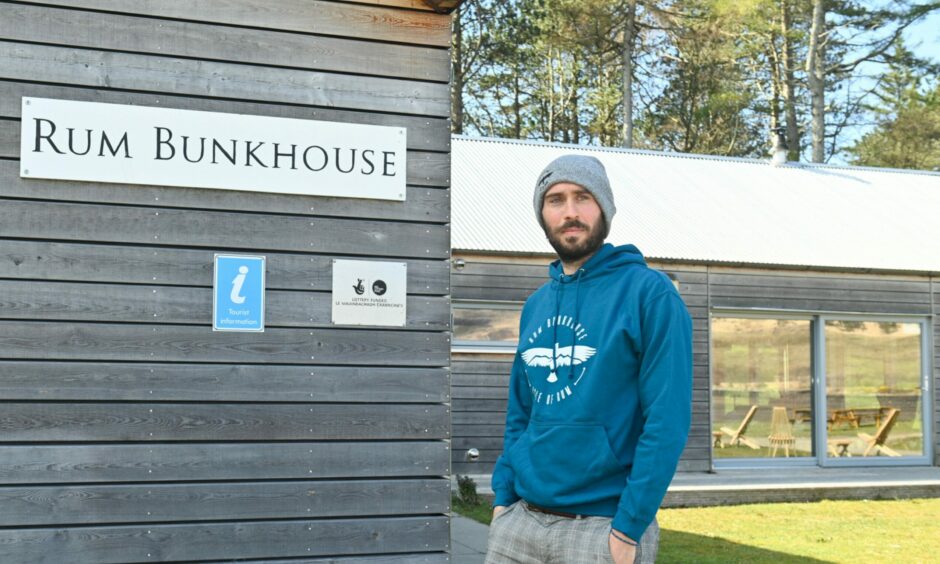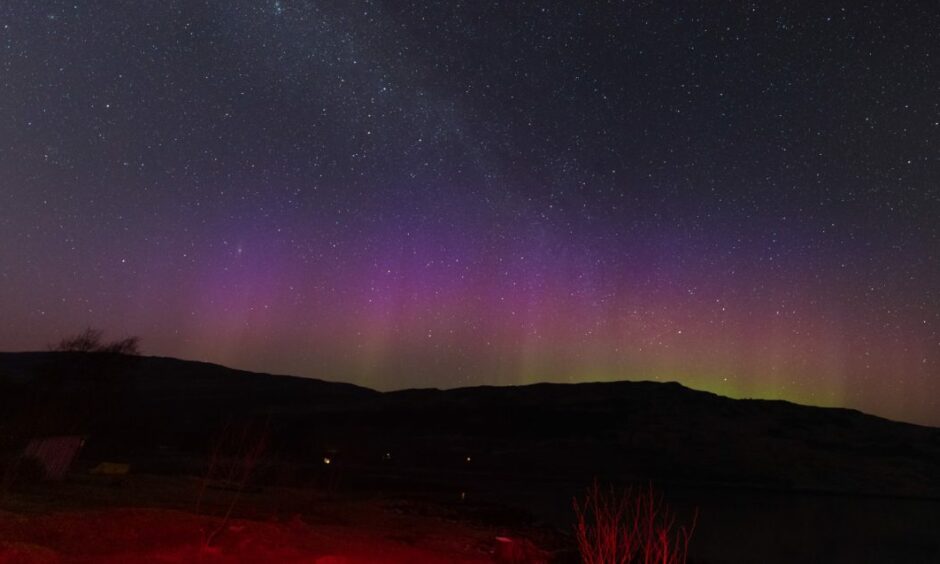The island of Rum is renowned for its wild and unspoilt landscape as well as its geology and wildlife.
But another natural asset, the clear night skies, could in future help boost visitor numbers.
Rum plans to submit an application by this summer. If it is successful, it would be the first place in Europe to be designated as a ‘Dark Sky Island’.
Fundraising appeal to support application
Islanders are fundraising to buy telescopes, weather stations and a sky camera ahead of seeking the designation from the International Dark-Sky Association (IDA).
They see long-term benefits to the community via more year-round opportunities and chances to create employment.
With the current interest in the aurora borealis, it is also seen as a way of attracting more visitors to the island and capitalise on the growing astro-tourism sector.
The island hopes to raise £10,000 via an online appeal to support its application.
This would buy a sky camera system to live stream the night sky from anywhere in the world. It would also stretch to a meteor detection camera.
It is also hoped to purchase a range of telescopes to be permanently based for visitor and community use all year round and a weather station to assess dark skies.
Alex Mumford is the islands’s visitor service manager. He has held stargazing events for visitors.
He aims to submit the bid this summer with hopes of designation by mid 2024.
Mr Mumford said Rum’s sky regularly has scores of IDA levels.
“It’s a great opportunity for use to have that recognised and protected. It’s very exciting.”
According to the IDA, the night sky brightness is routinely equal to or darker than 21.2 magnitudes per square arc second in a dark sky park.
Alex says Rum’s readings are regularly 21.2-21.8. This week it produced a score at the lower end when the aurora was visible on the north coast.
Dark skies status offers many benefits
He said designation will have many benefits, including for wildlife which can be affected by light pollution.
“It would future proof any development that happens here.
“There will be a standard regarding what lighting should be used in certain areas. It helps protect our seabirds and migrating birds by having as little light as possible.
“It’s good for plants and trees as it means they can regulate their season. It will also increase our tourist season which would be huge.
“We could bring people here between October and March, the best months to see the sky, and hold events year-round.
“There is a market for this type of tourism and it would be a win-win situation for us and the wildlife here.”
Rum is working on the bid with Steven Gray, from Cosmos Planeterium. It is a mobile planetarium that promotes astronomy and dark skies.
Steven, who is also president of the British Association of Planetaria, said: “Rum is an incredible place and the chance to protect the skies here will be a benefit for the community and a legacy for future generations.
“The skies here are as good as any of the places that have status. It is a fantastic place and I’m sure they will have every success with the application.
“There are not many places left in the UK or Europe where people can see the night sky as it should be.
“It brings a real uplift in wellbeing and outlook when people see darkness as it should be, unspoilt by the light pollution that’s around.”
Tourism opportunities from designation
Scotland has two ‘dark sky parks’ – Galloway Forest Park and Tomintoul and Glenlivet
Moffat and the islands of Coll and North Ronaldsay are also certified ‘dark sky communities’. There are currently no ‘dark sky islands’.
A study of the Galloway park showed that for every £1 spent on installing dark sky friendly lighting, there was a return on investment of £1.93 due to an increase in tourism.
Chris Taylor is VisitScotland’s destination development director.
He said: “Trends are showing us that travellers are looking to slow down and partake in activities that contribute positively to their wellbeing.
“Astro-tourism, and observing the night sky, is a growing trend. It allows visitors to spend time in nature and really connect with their surrounding environment.
“Scotland is lucky enough to enjoy some of the darkest skies in Europe, largely thanks to wide areas of low light pollution, especially in the Highlands and islands, away from large centres of urban settlement.”
He said a lack of street lights, a small population and local commitment to conservation, have helped dark sky communities like Coll remain a place of natural beauty.
“A dark skies designation can be a superb marketing tool to communities looking to provide new and unique ways to attract visitors.
“It benefits regions by attracting visitors especially outside of the peak season, as well as boosting visitor income and occupancy rates for accommodation providers.”
Are you interested in more exclusive and breaking Highland and Islands news from the P&J? If so, why not join our dedicated Facebook page HERE




Conversation